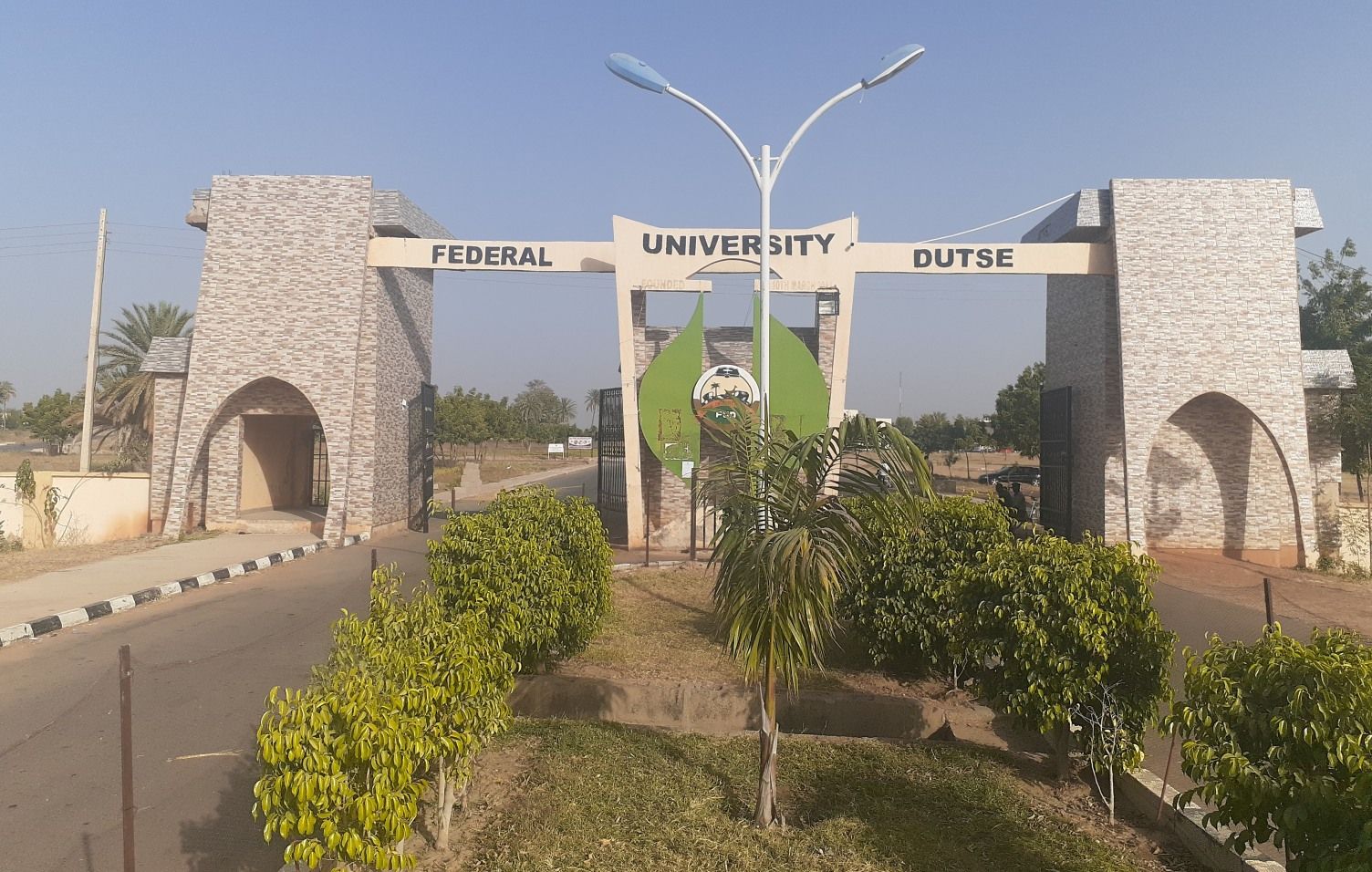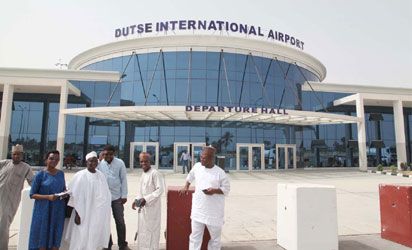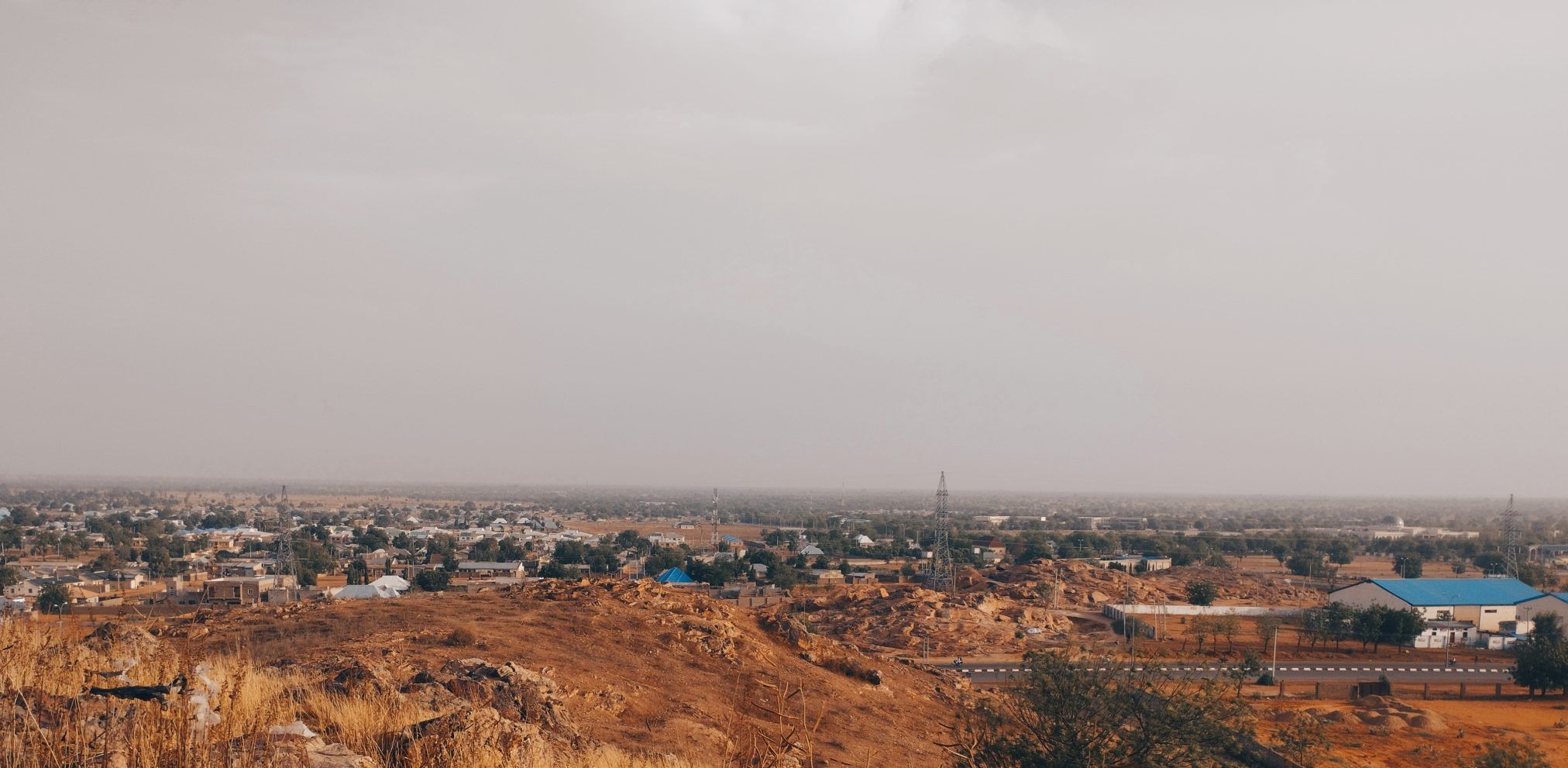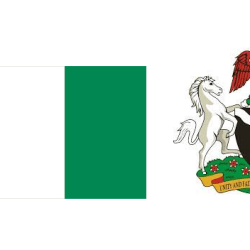Dutse is the capital city of Jigawa State, northern Nigeria.
It is home to Federal University, Dutse established in November 2011.
In addition to the Federal University Dutse, there is also a Research Institute for Date Palm (Sub-Station) and state polytechnic in Dutse.
The Jigawa State Polytechnic has its College of Business and Management Studies at Dutse.①



HISTORY OF DUTSE [GADAWUR]
Legend of the people speak of an early epoch of a great hunter called [Duna-Magu] a Kanuri man who first discovered Dutse nicknamed [Gadawur] as a rich hunting ground for gazelles [Gada in Hausa].
The settlement of Garu which traditions claim pre-dated the arrival of Bagauda to Kano in the dying years of the 1st millennium. The earliest written reference to Dutse is reported in the famous Kano chronicle which mentioned its defeat by Sarkin Kano [Abdullahi Burja C. 1438=1452], who was said to have followed up the defeat with the marriage of a daughter of the Sarkin Dutse alongside the daughters of his Galadima. The earliest written reports indicated that by the opening years of 18th century, Dutse had grown into a very big town comprising of about seventy wards within its walled vicinity. The wall, which was built around the rock clusters, enclosing [Jambo stream] within the central area, hand twelve city gates [Kofofin Gari] named after the nearest wards:
twelve city gates
Although the wall does not stand now, remnants of it are still visible in some areas:
HISTORY OF DUTSE RULERS C.1732-2000
ADA, THE GREAT C. 1732-1735
The years between 1732-1735 in Dutse’s annals were dominated by a powerful figure of Fulani descent called Ada who came to the area as a military envoy of Sarkin Kano Kumbari, sent on a mission in 1732 to put a stop to the slave raiding forays of Sarkin Dutse [Makuri] in to Kano area. However, no sooner had Ada defeated Sarkin Dutse [Makuri] events took an unexpected twist as he not only usurped the ruler-ship of Dutse but also asserted his independence and further proceeded with re-organization of a strong military force to rival Kano. Little wonder within two years he not only annexed territories from Aujara, Birnin-Kudu, Kiyawa, and Ringim; but also repulsed several expeditions mounted against him by his erstwhile boss. The period of Ada marked Dutse’s pinnacle of zenith and glory. It is said of Ada that by c. 1735 all Kano warriors were reluctant to answer further Kumbari’s call for expedition against him. This development left Kumabri at the mercy of some 99 Kano princes who only on exacting a heavy concession agreed to come to his aid. The princes set out on their mission to capture Ada, by dressing eunuch impressively in royal regalia as to deceitfully appear as Sarkin Kano kumbari. In the course of the encounter that ensured, Ada who mistakenly went in pursuit of Sarkin Kano [Kumbari] found himself facing a decoy surrounded by the prices. Even at that point Ada rather than surrender opted to fight to his last breath. The gallant combat fighter he was, Ada only gave up the ghost after killing four of the Princes namely:-Dan Buram, Dan Lawan, Dan Maje and Dan Isa. Interestingly however, this victory was not followed up with a march into the walled town with a view to seizing its control for as Kano chronicle reports the ruler of Kano was prevailed upon by his advisers not to dare make the attempt but to return home immediately.
[Tsohon Mutum] an erstwhile army commander and great strategist under Sarkin Dutse [Makuri] filled the vacuum left by Ada’s death. The most remarkable achievement of which Dutse tradition best remember him was the building of [Ganuwar Garu] additional wall surrounding Garu palace town with its only one gate [Kofar Garu]. This wall, which still visible in many areas around the town was built with a mixture of special mortar and lumps of stones, making the town of Garu in-axcessable to invaders except through the only one highly fortified gate. The additional wall around the hilltop create a castle like fortification within an already walled town. Sarkin Dutse [Tsohon Mutum] Retired on the admonishment of his Queen named Yar-Gyatuma after 60 years on the throne C1737-1797 and was followed in succession by his two sons Natata C1797-1799 and Gwajabo C1797-1806. Sarkin Dutse Gwajabo was over thrown by [Salihi and Musa] the Jihadist Revolutionaries who captured Dutse in 1806.
THE ASCENDANCY OF THE FULANI IN 1806
Unanimous Dutse traditions relate about Salihi and Musa of [Yalligawa and Jalligawa] Fulani clans respectively as the principle actors who led the movement that ushered in the ascendancy of Fulani rule in 1806. It appears that the duo as the head of their clans generally referred to as [ Fulata-Borno] migrated to what is now refered to as Dutse Gadawur from Birnin Gazargamo in Kanem- Borno Empire [Now in Yobe State] in 1801. These Fulani clans were better known as [Fellata] or [Fulbe]. They have been occupying the western part of the empire since the 16th century as a fertile grazing ground for their Livestock. They remained distinct and refusing either to be assimilated by the Kanuri majority nor participate politically in the government in Gazargamo, but have always paid local taxes, and grazing dues to the central government and local leaders in whose territories they resided. By the 18th century, mainly as a result of the weakening of the central government, the Fellata began to bear most of the hardship. Some scholars among them including Salihi and Musa began to criticize the government through preaching the virtues of good governance thereby pitching them against the government. In 1801, the two clans [Jalligawa and Yalligawa] were forced to migrate to what is now Dutse Gadawur, where political climate was much better. Here they have an opportunity to establish themselves as political leaders cum Islamic scholars by wining the hearts of the native people. Five years later, over threw the government of the Hausa ruler [Sarkin Dutse Gwajabo] in 1806 after answering the call of Othman bin Fodio, a man dubbed “the deliverer of the truth” They left for Zamfara in the company of Malam Sulemanu where a meeting to select a leader for the Fulani in Kano was called by Shehu Bin Fodiyo. Due to some reasons Shehu could not attend the meeting but was represented by Muhammad Bello, with the instruction to appoint Mallam Suleman as [the first Fulani ruler of Kano]. On their return from Zamfara they settled briefly in Marmara quarters in Kano city assisting [Sarkin Kano Suleman] in setting up an administration and the preparation for the final assault against the last Hausa King Alwali in 1806. In mid 1807, they seek Sulemanu’s permission to return to Dutse after the final assault at Burunburun. On their return to Dutse, [Sarkin Dutse Gwajabo] could not match their war skill, nor has he the capacity to challenge their control of over the people already in the mood for change. Sarkin Dutse [Gwajabo}on assessing the political atmosphere, relinquish power without a fight to the clans after negotiating his retirement. He retired until his death on a hill called [Jigawar Sarki] in Dutse metropolis. Defeat of EL-Kanemi forces In 1827, barely twenty six year after their migration, the El-Kanemi in an effort to re-capture their lost territories from the Sokoto caliphate came face to face with Sarkin Dutse Musa’s forces. Musa a war strategist hid his forces on the edge of river Kiyawa at a village that is now called FAKE a Hausa ward denoting hiding. He used his knowledge [as a Fellata ] of the Kanem war strategies against them as he led his forces in an ambush when they least expected and caught them off- guard. The El- Kanemi forces had to flee in utter confusion back to Borno abandoning some of their possessions along the way through Guddiri territory [now Katagum]. It is as a result of this defeat, subsequent Dutse rulers were referred to as {Mai Barnawa} meaning chief of Kanuri as derogatory remark in a joking relationship between the Fellata and the Kanuri their former hosts and rulers.

JALLIGAWA AND YALLIGAWA [CLAN DUTSE RULERS]
It is significant to highlight that the ascendancy of Fulani in C1807 marks a turning point in the history of Dutse as it lost its independence and became submerged into Kano, as the clan leaders opted to recognize Sarkin Kano Sulaiman as their spiritual leader. In return however, Kano conceded a certain degree of autonomy to Dutse particularly in the sphere of Local administration. For instance the two ruling clans of Jalligawa and Yalligawa were reserved the exclusive right of producing successive Dutse rulers, while Kano’s role remained limited to confirmation and installation of nominated candidates for ruler ship. Such was the nature of the relationship between the two until the British conquest of Kano in 1903 and the subsequent administrative reforms introduced by the imperial power. The reforms fundamentally eroded the autonomy of Dutse and placed it under the introduced district head system as the new system of local administration all over Northern Region [including Kano Emirate]. Territories all across the emirate were re-grouped in to consolidated district areas. The then Sarkin Dutse [Haladu] was reverted to a salaried district head charged primarily with the responsibility of tax collection under the new dispensation. He later became the first victim of the new system as he was removed in 1910 for failing to collect adequate taxes. However, the exclusive hereditary right of the two ruling houses in Dutse was preserved after some attempts to change the arrangement.②
References
① https://en.wikipedia.org/wiki/Dutse
② https://jigawastate.gov.ng/dutse.php











